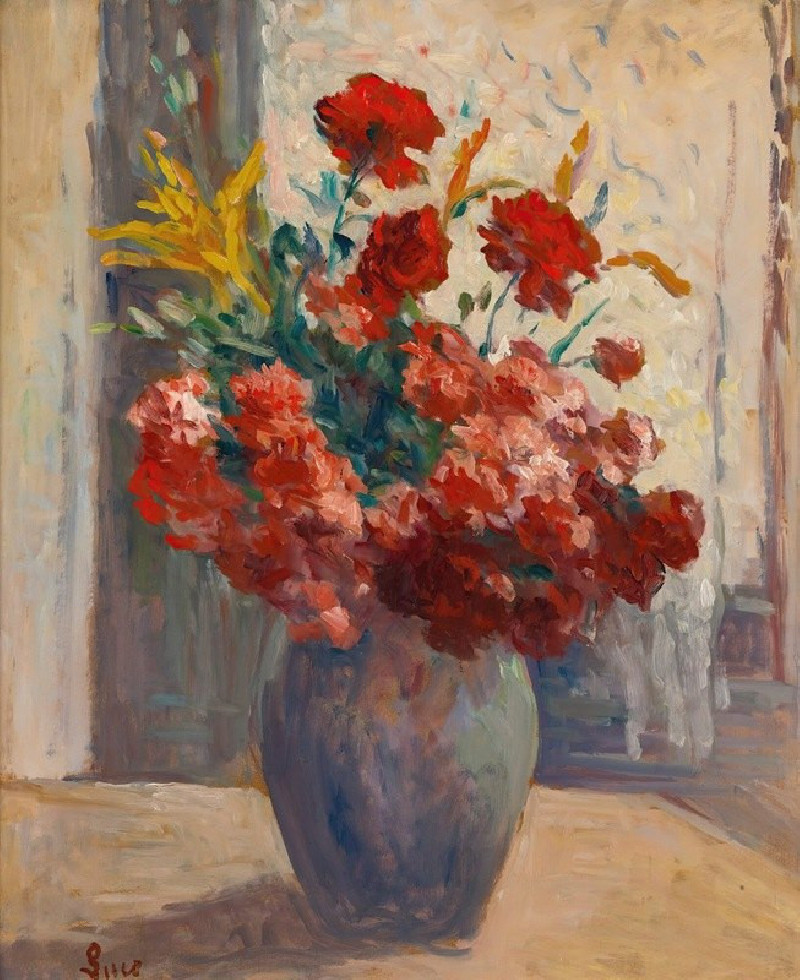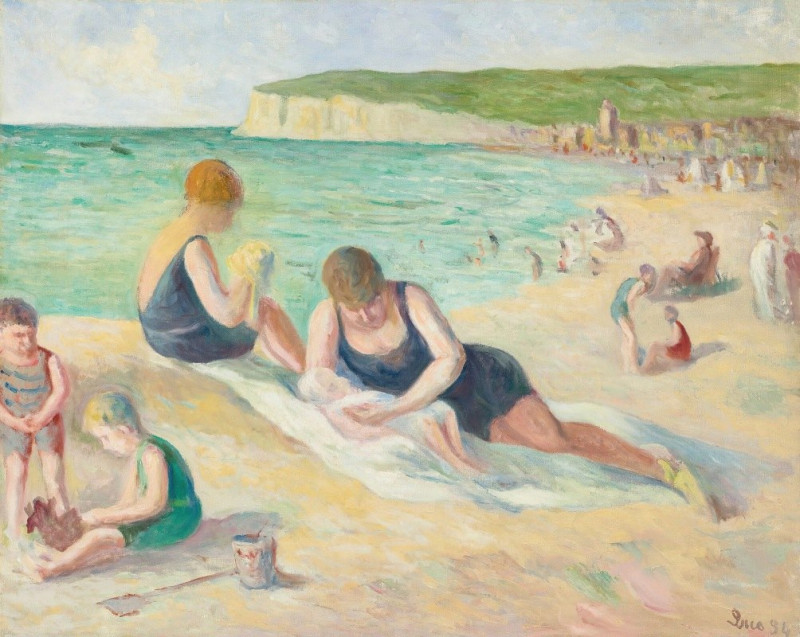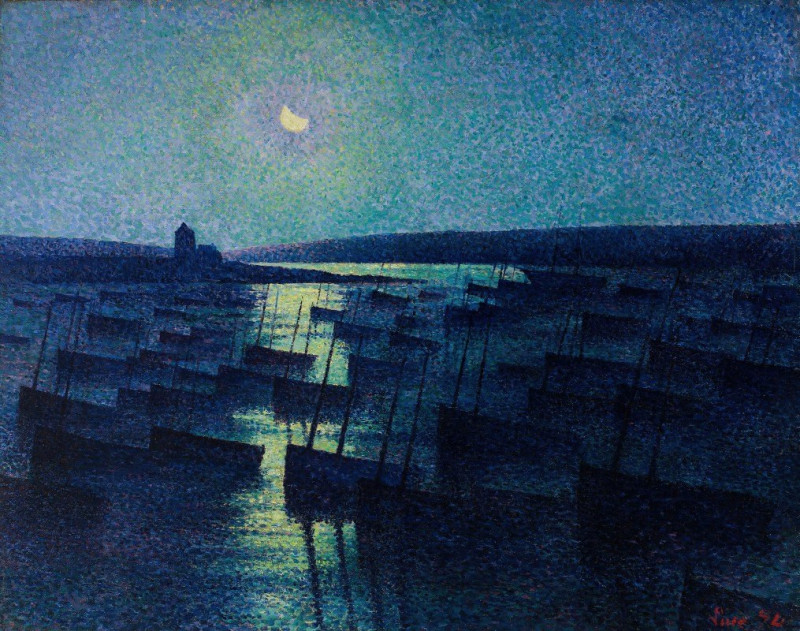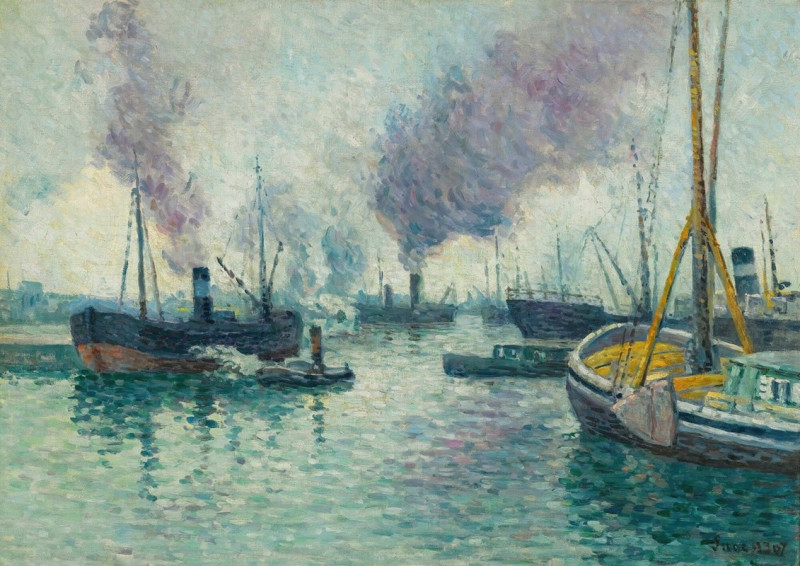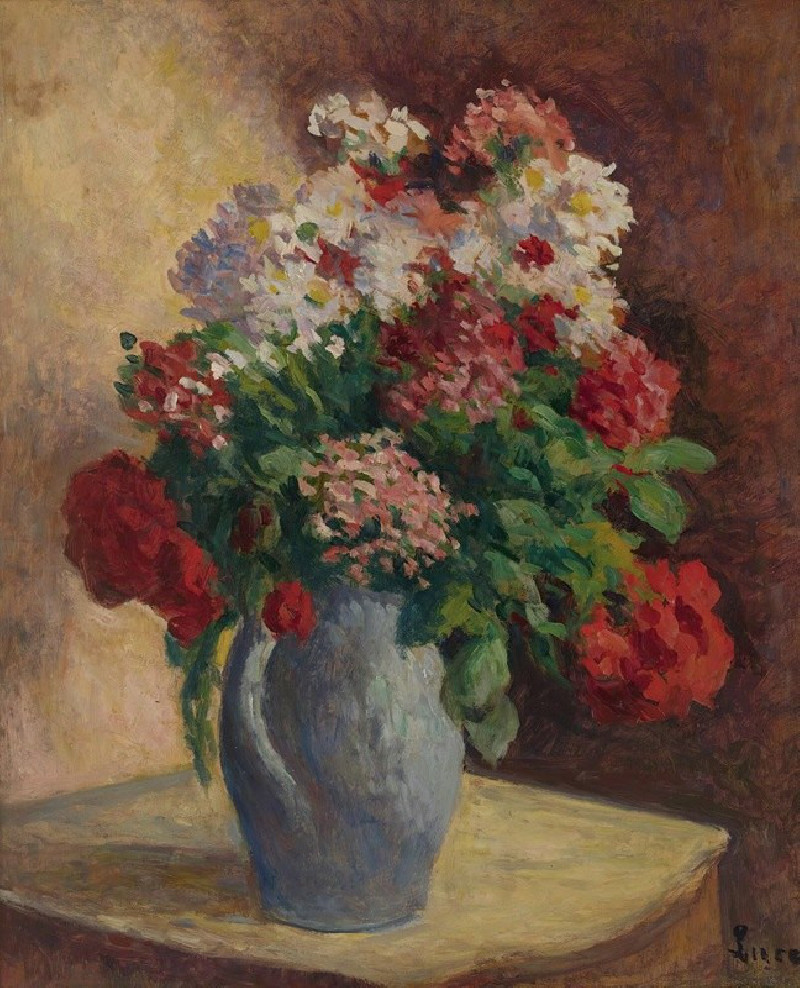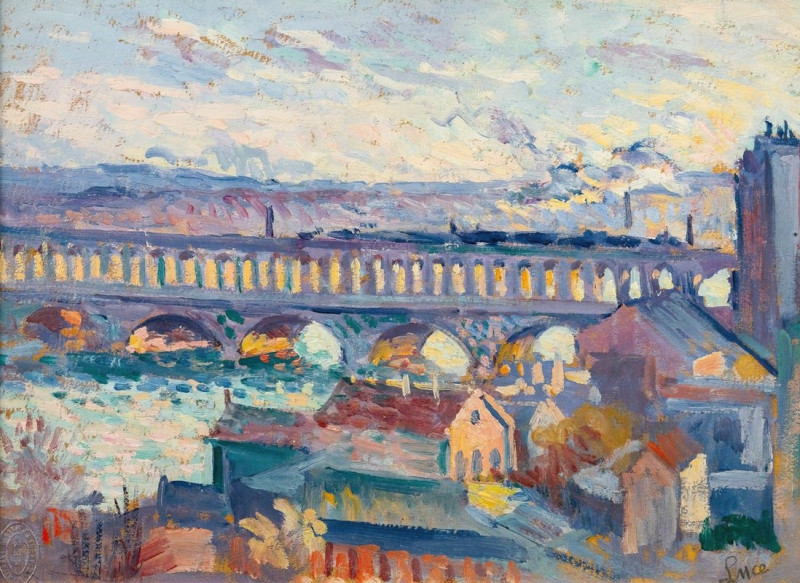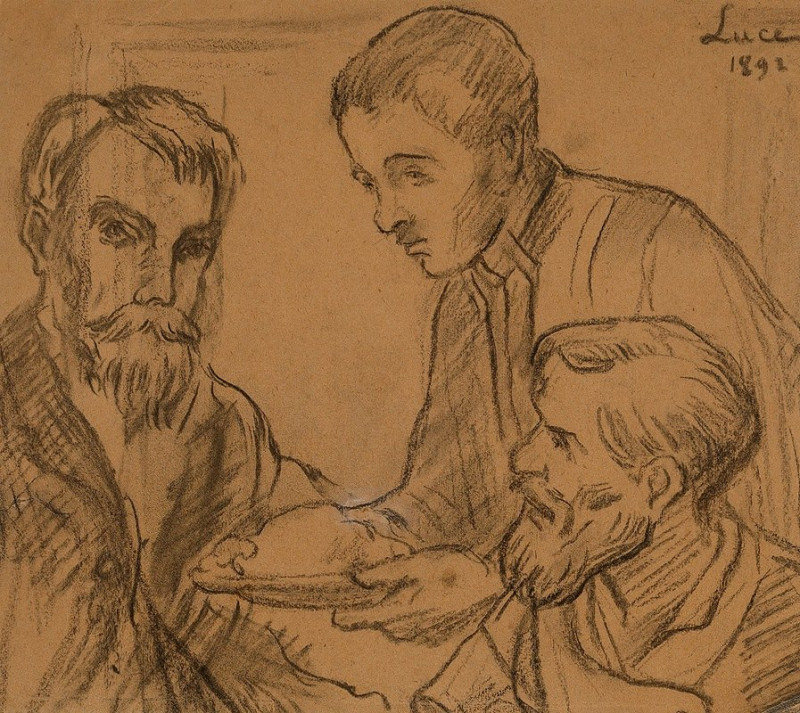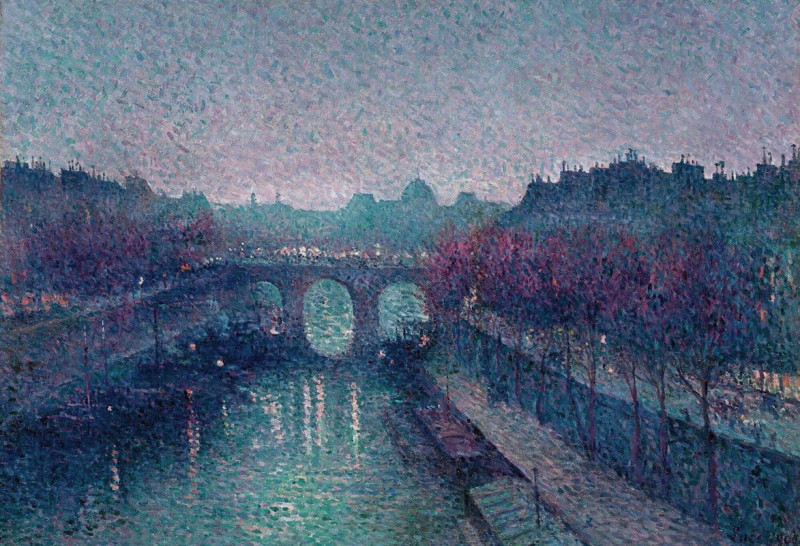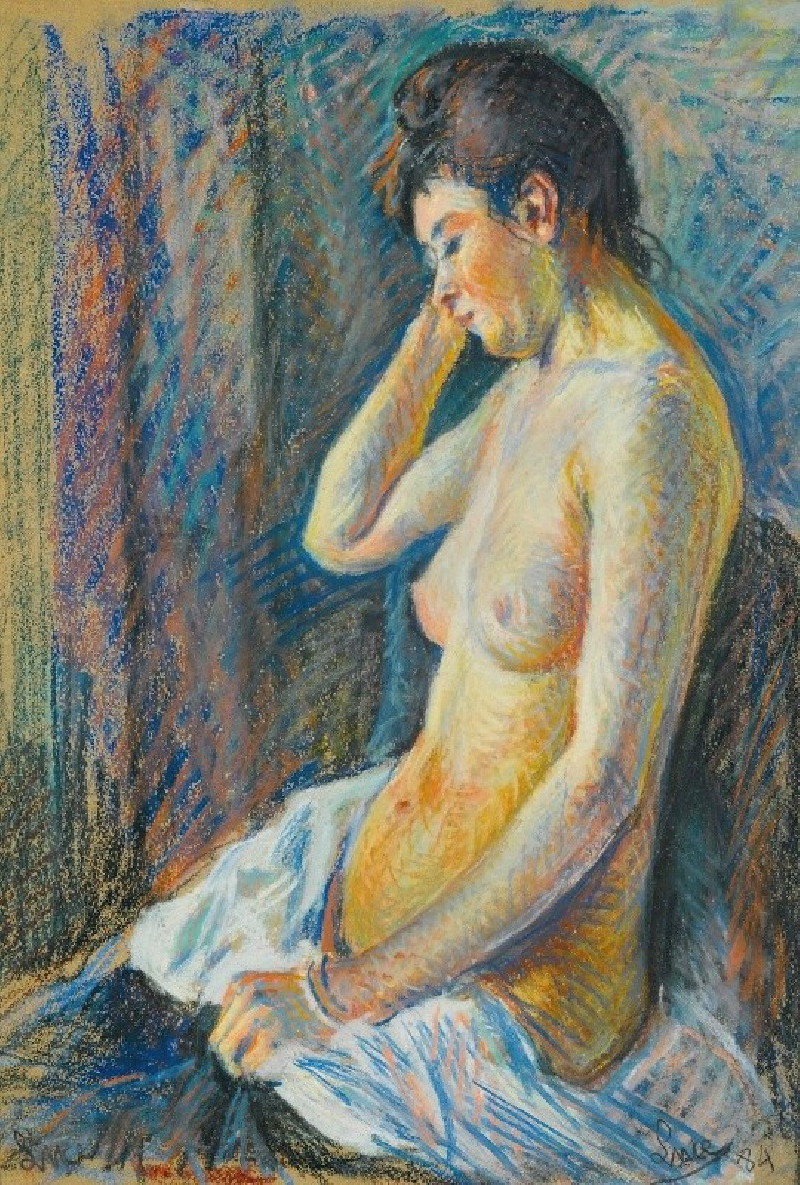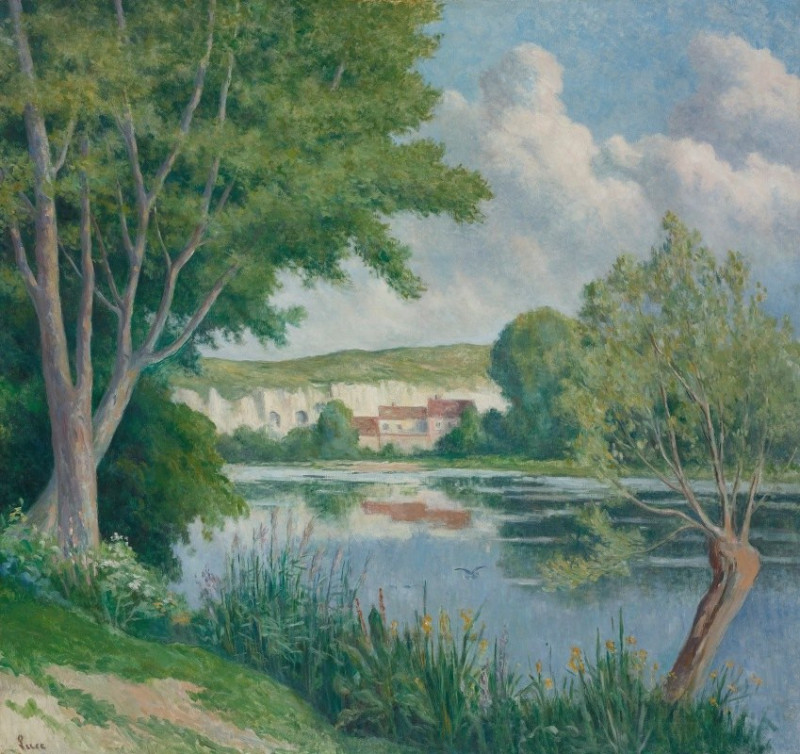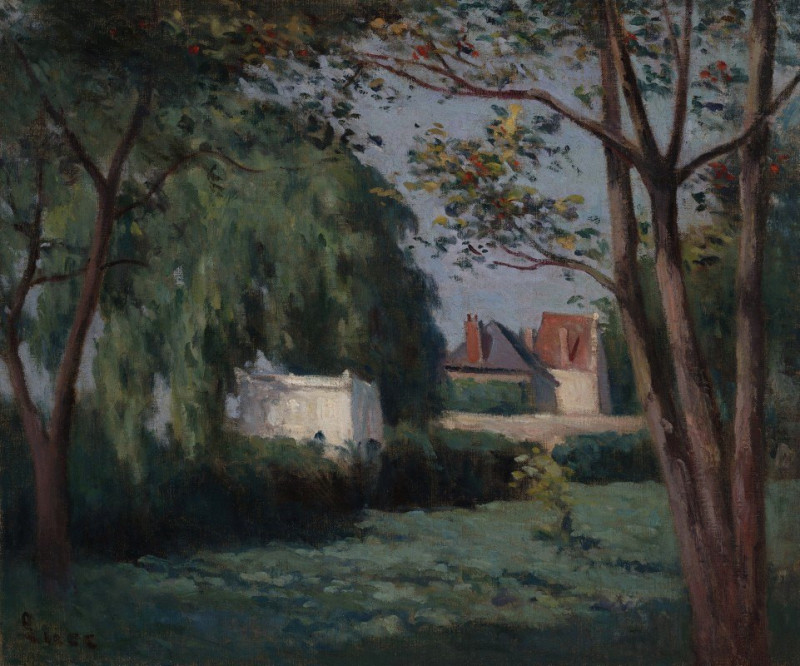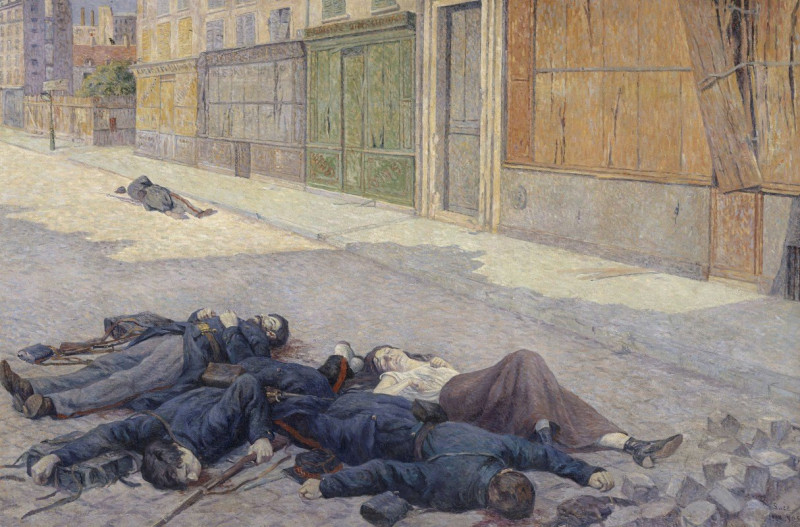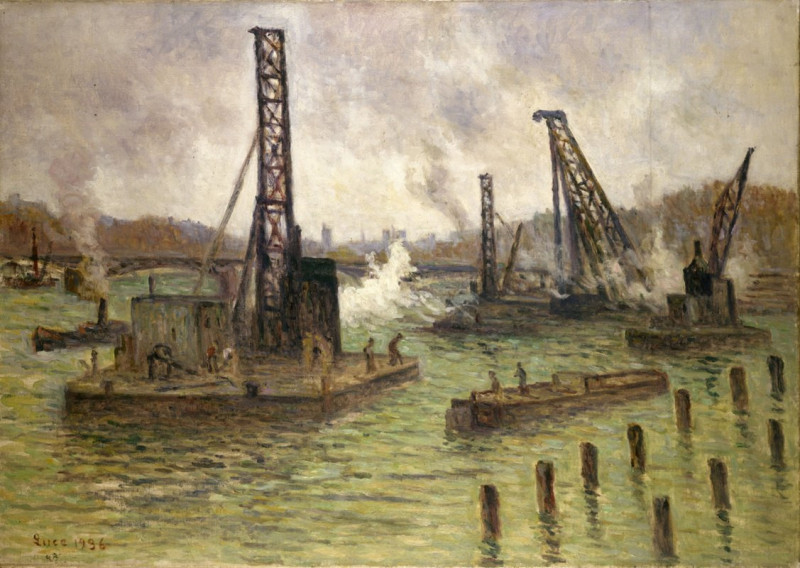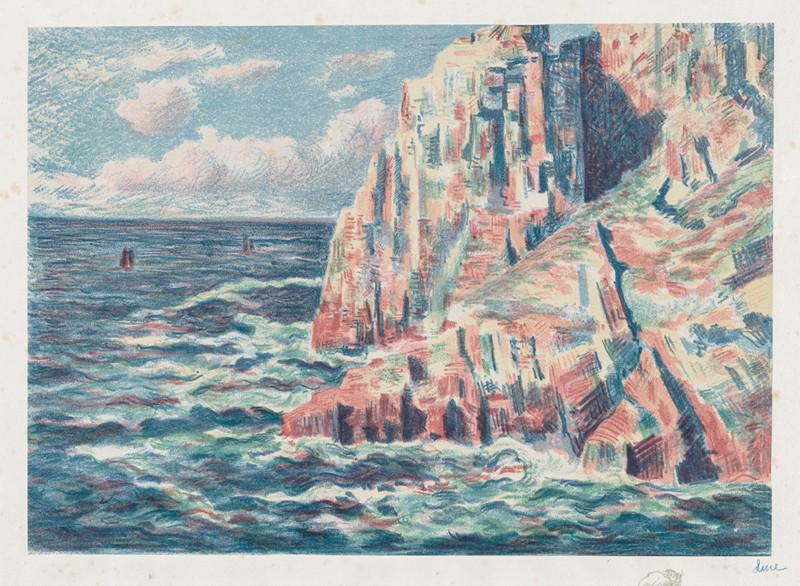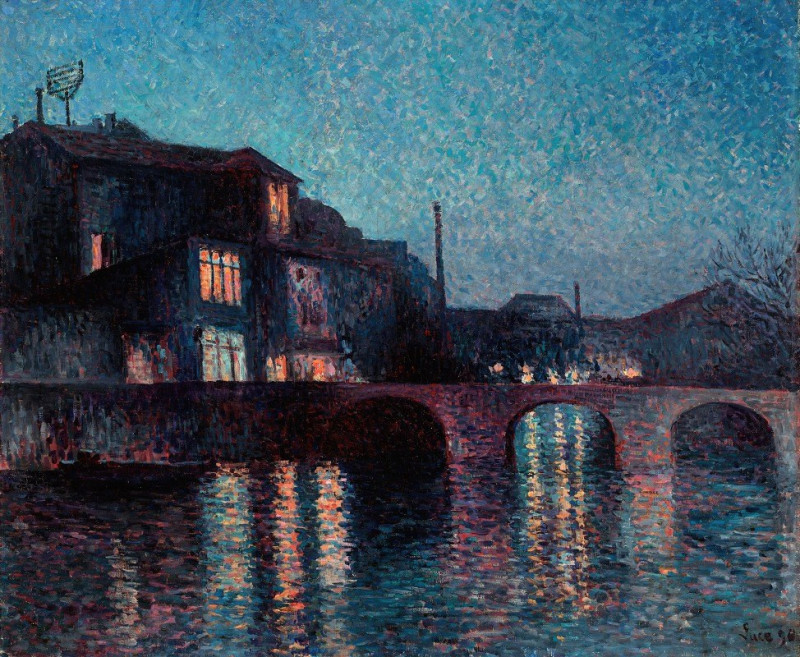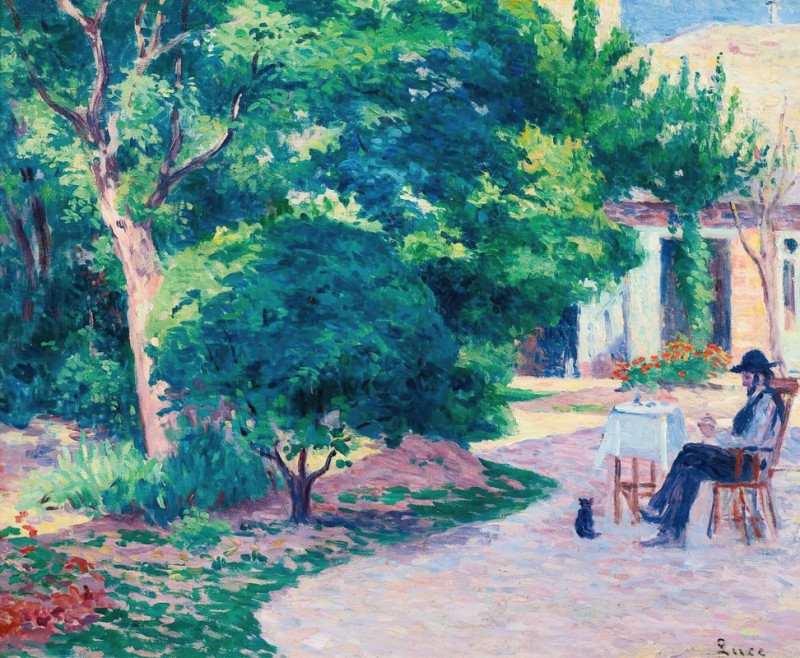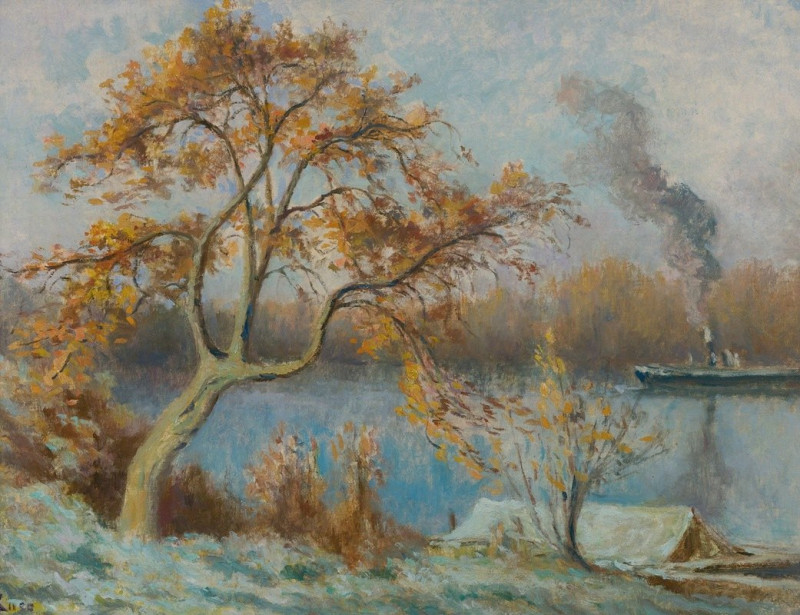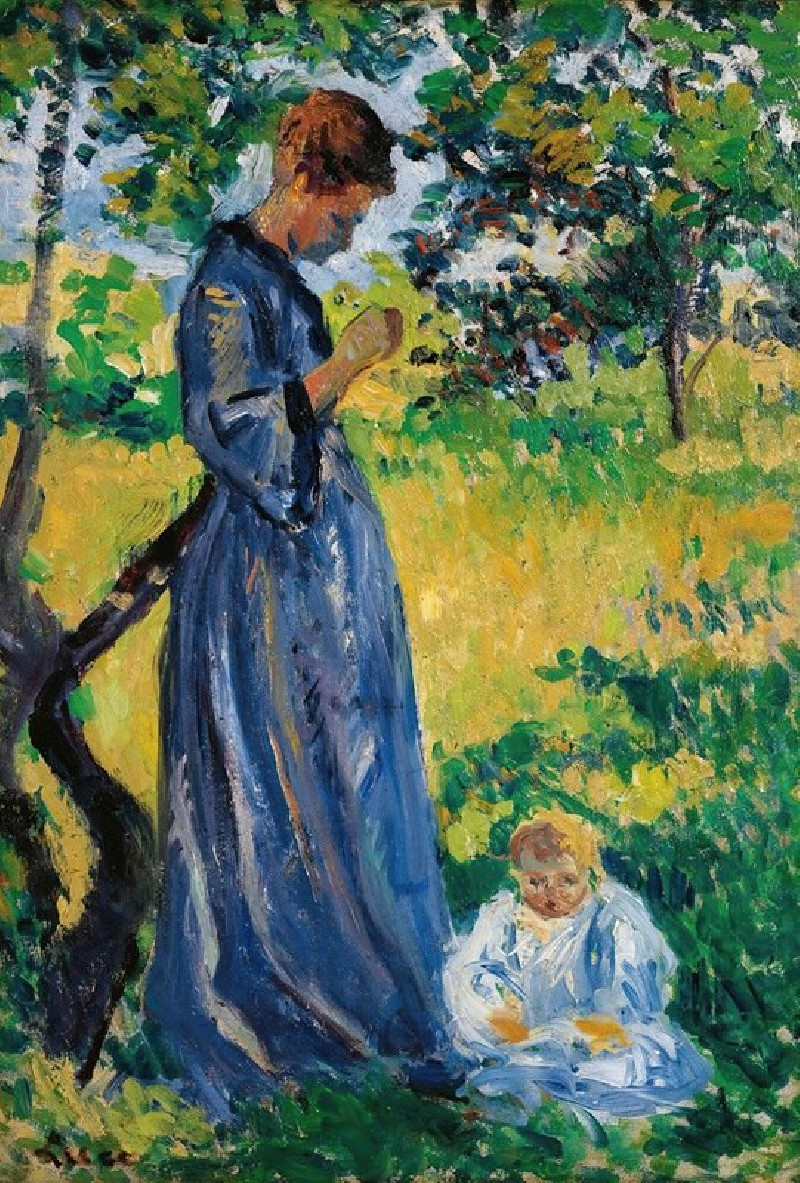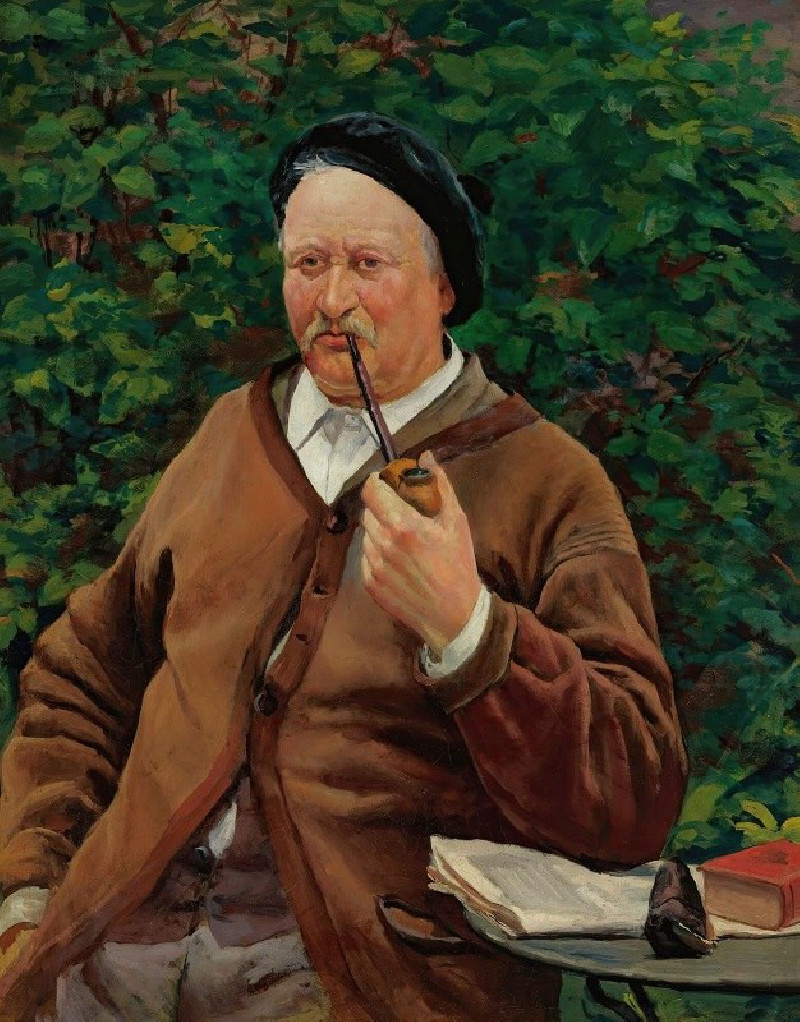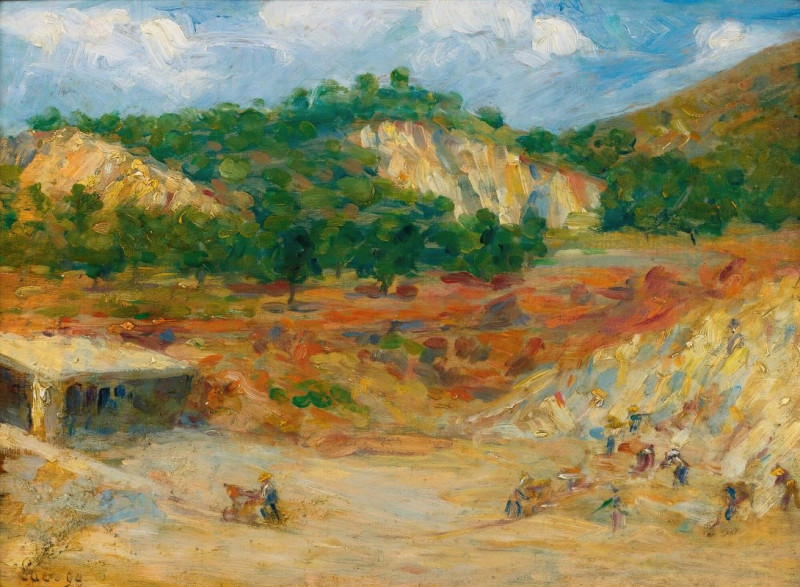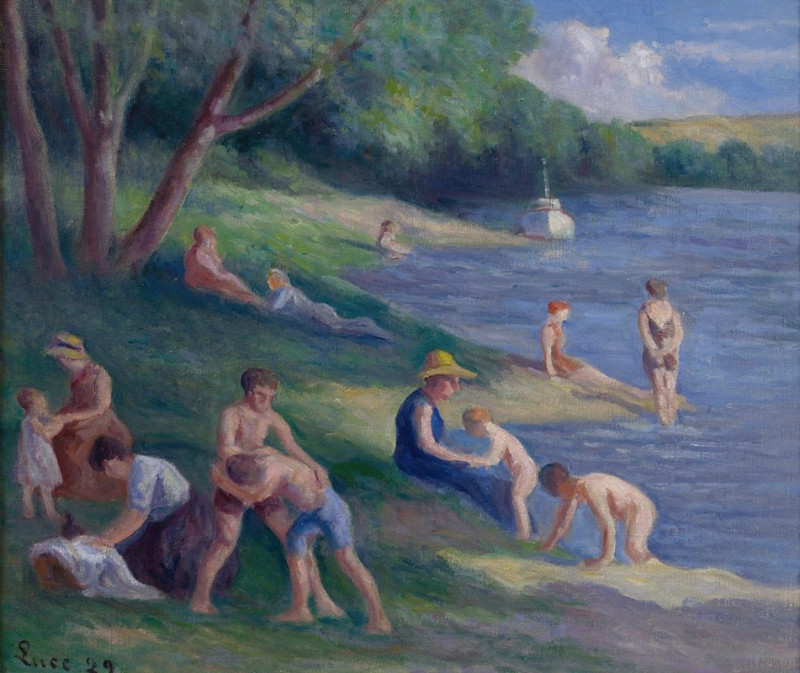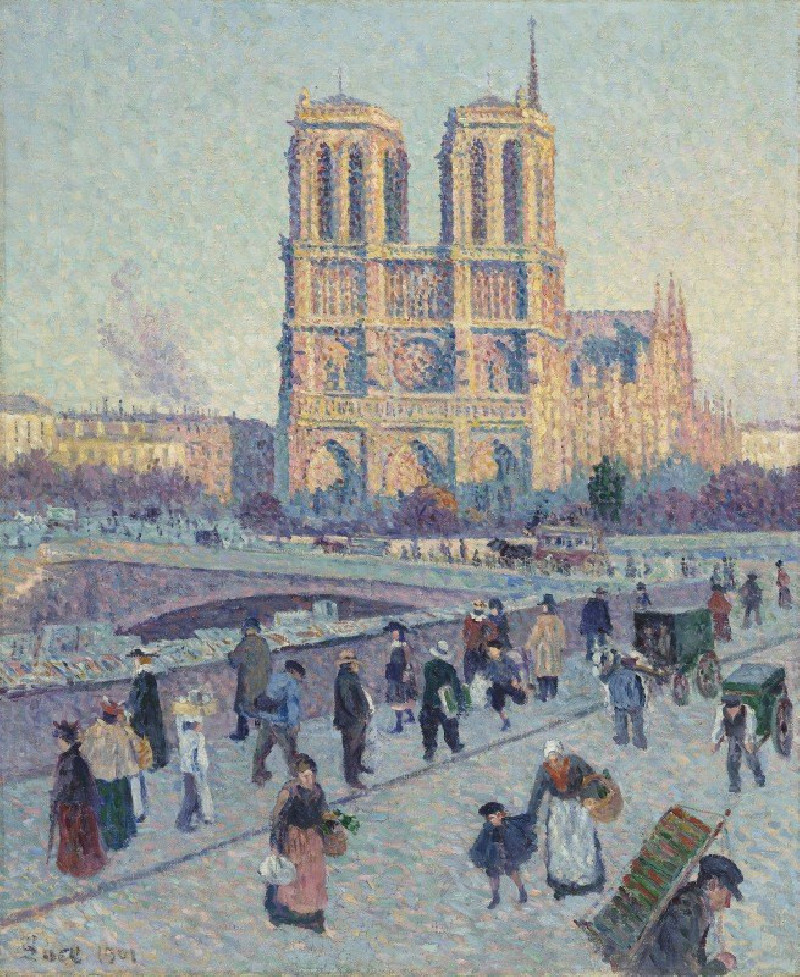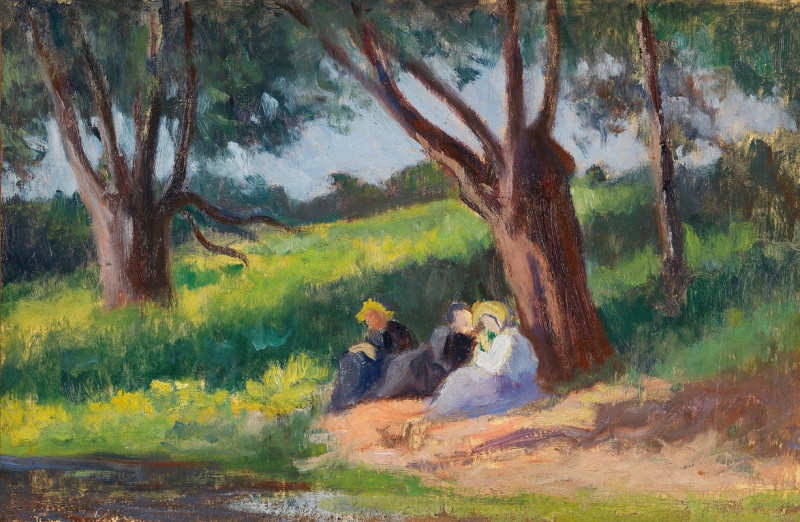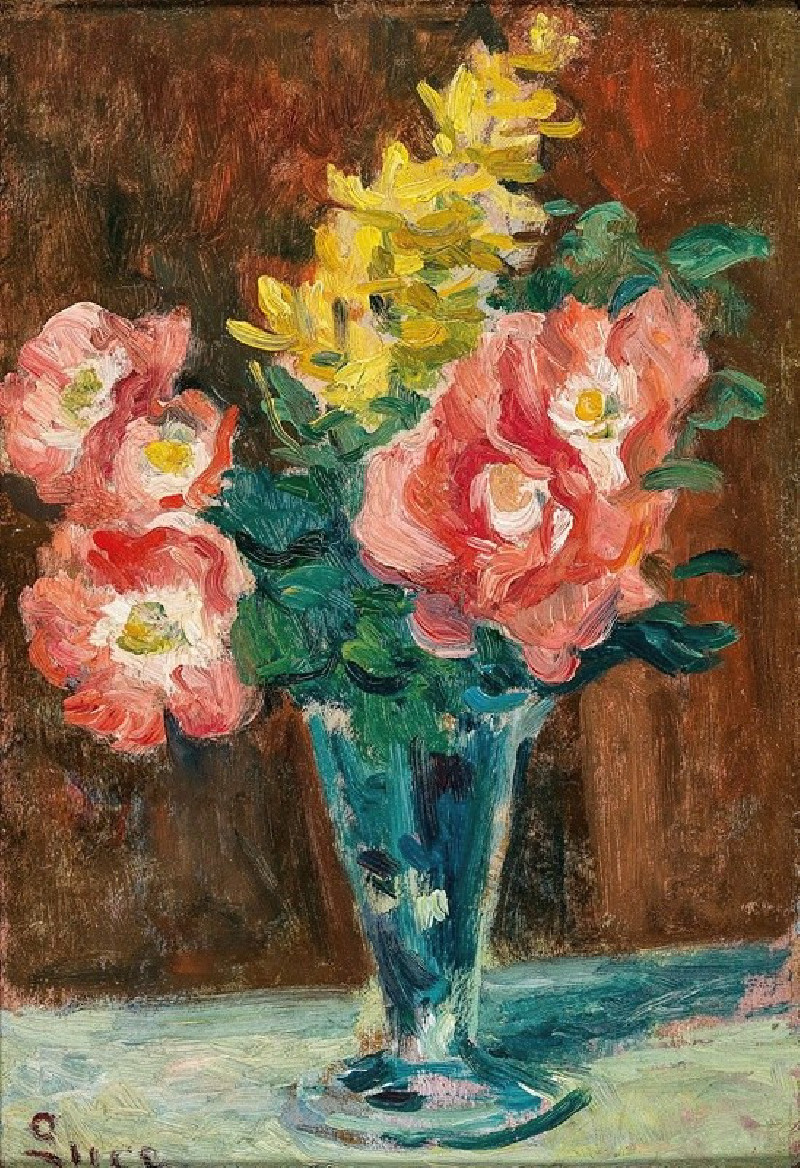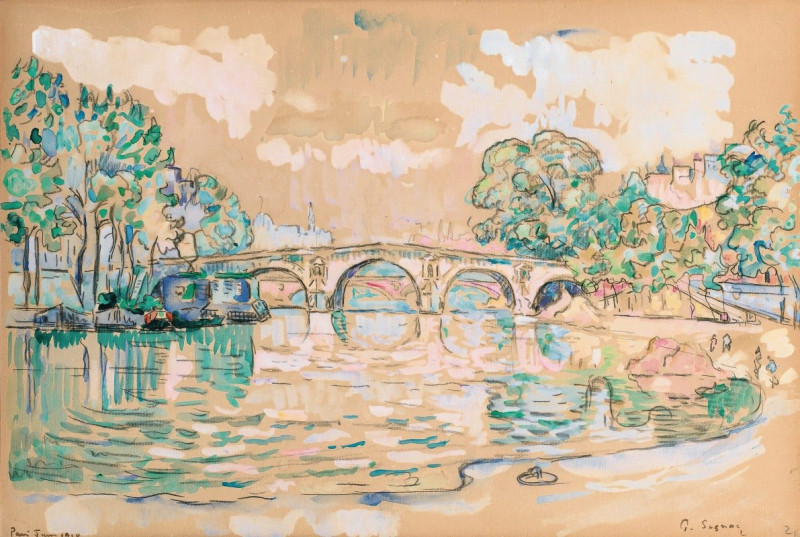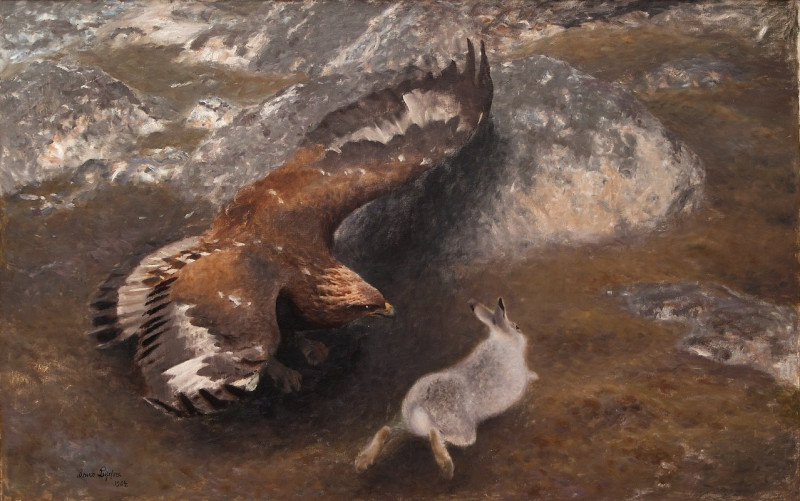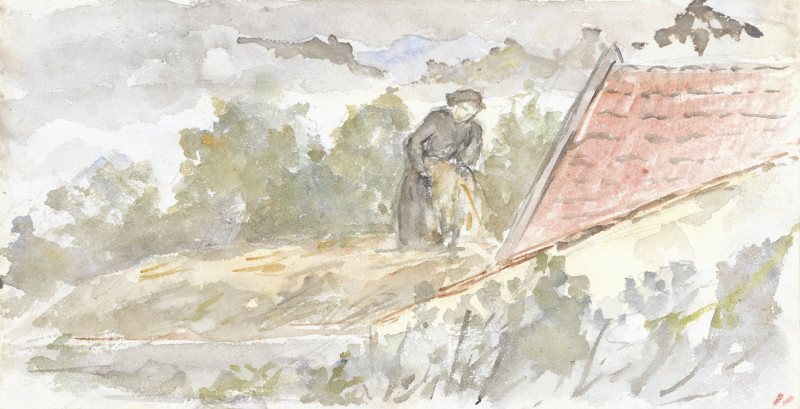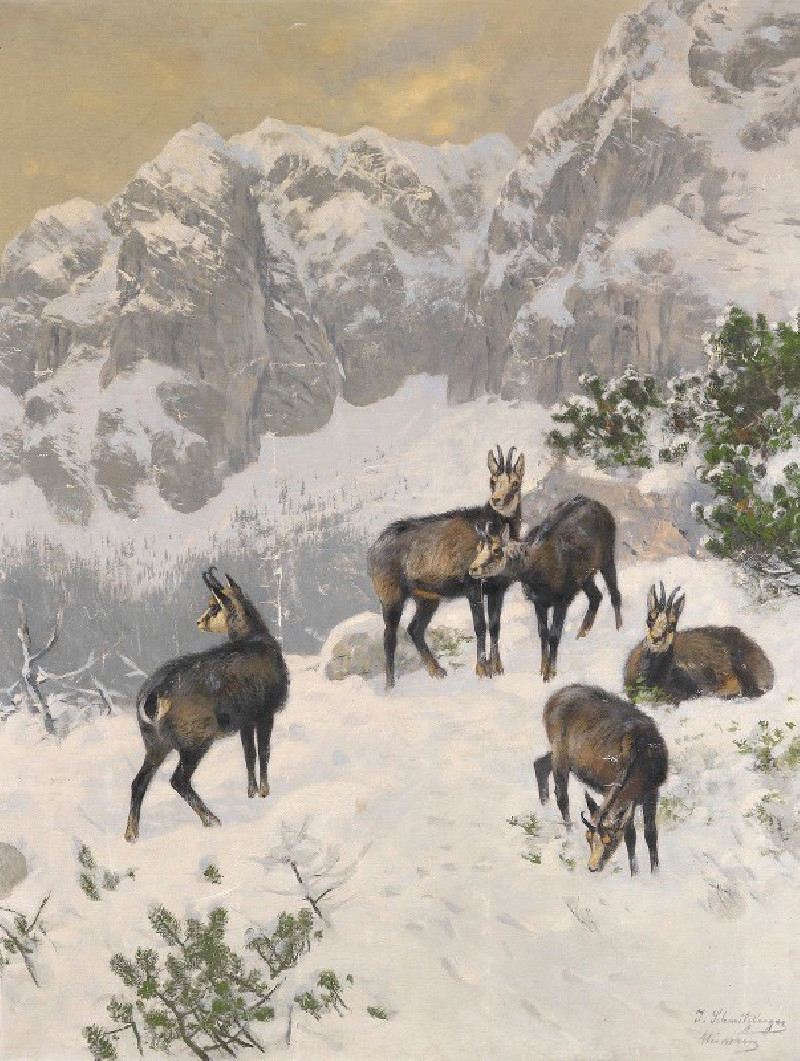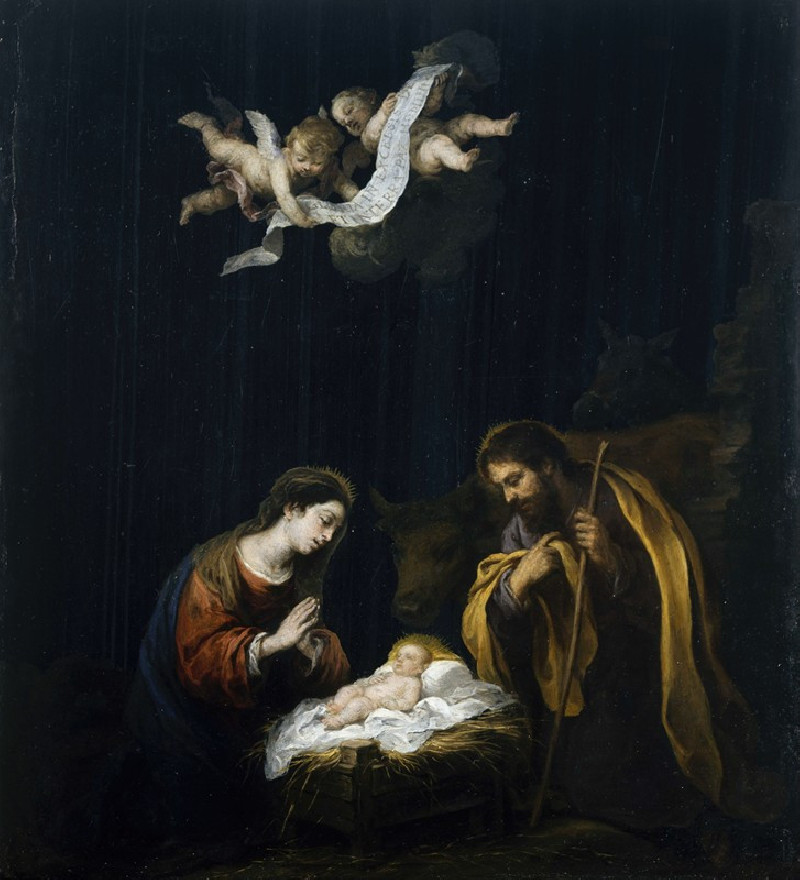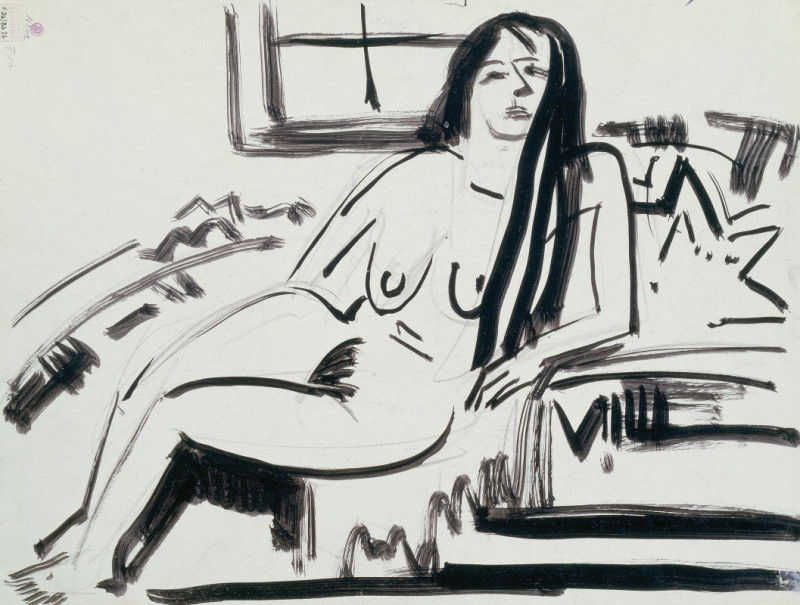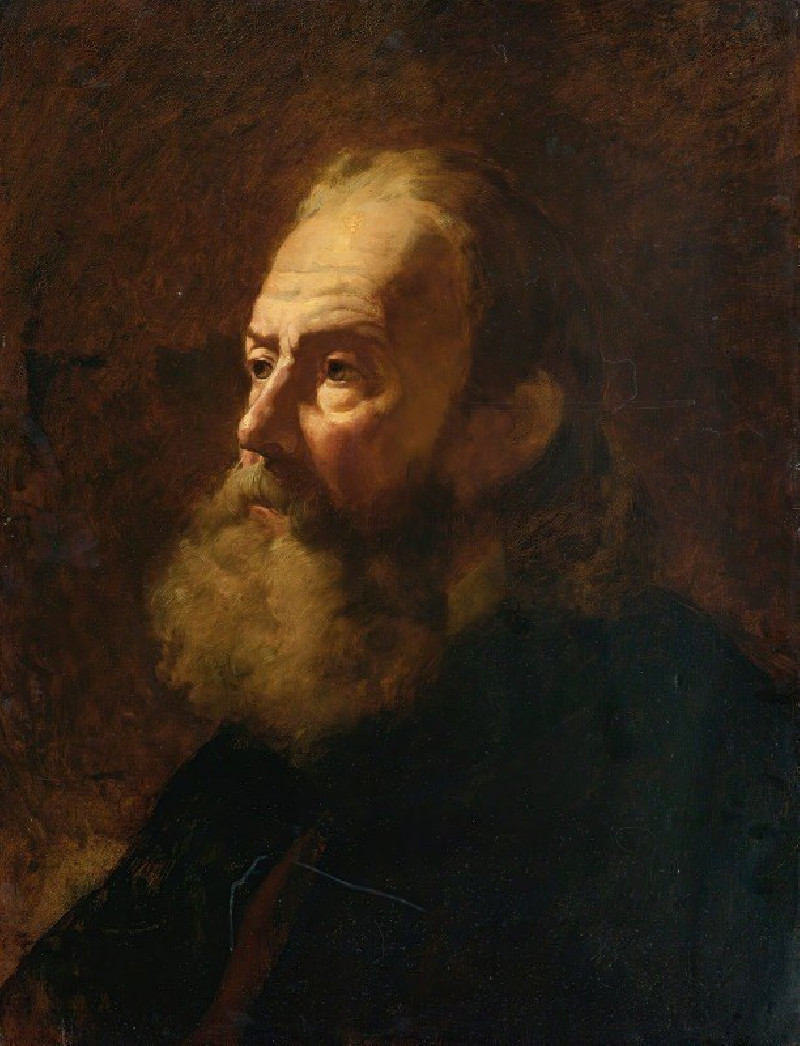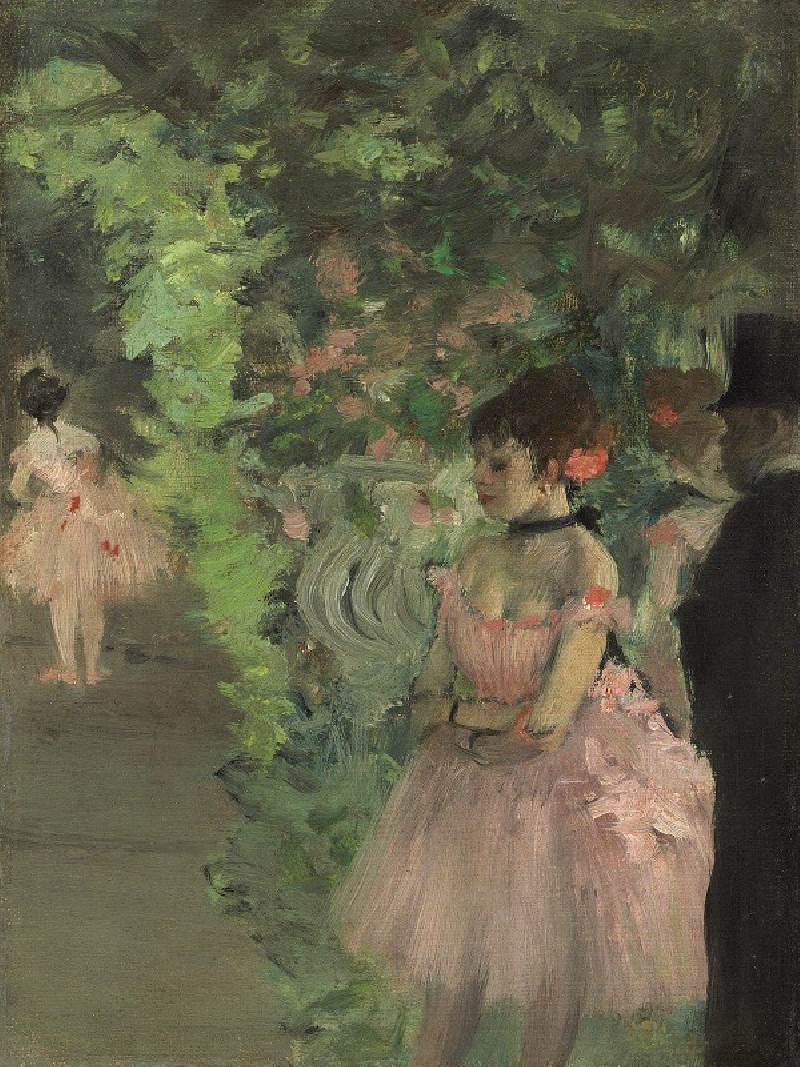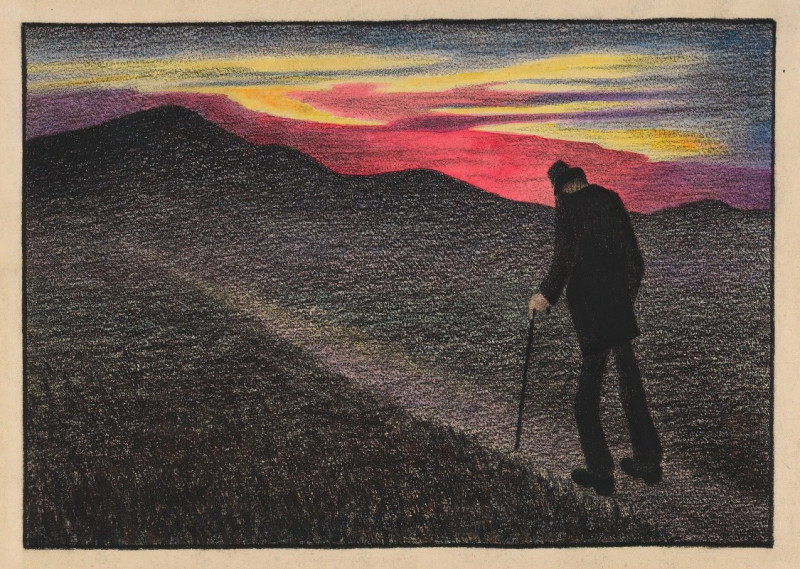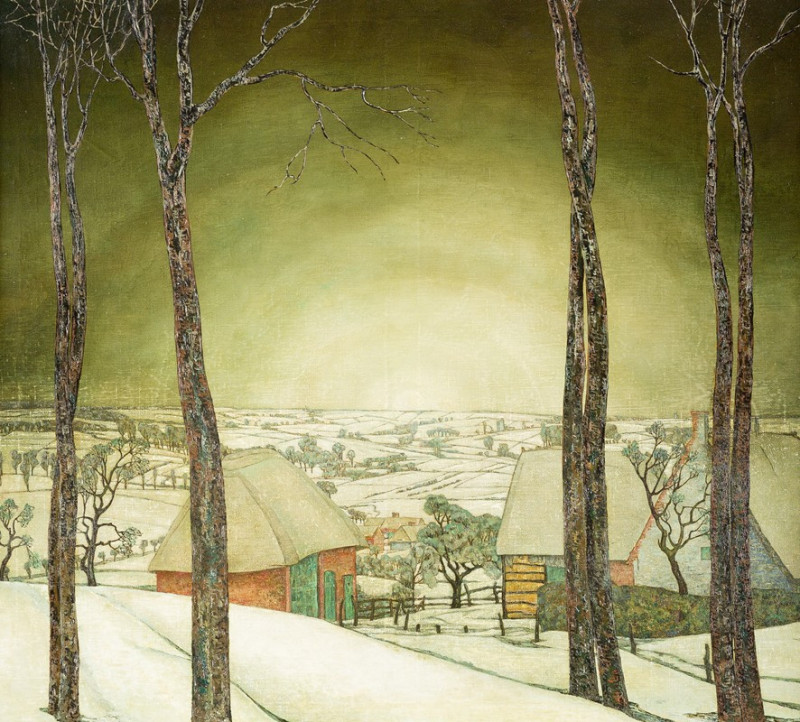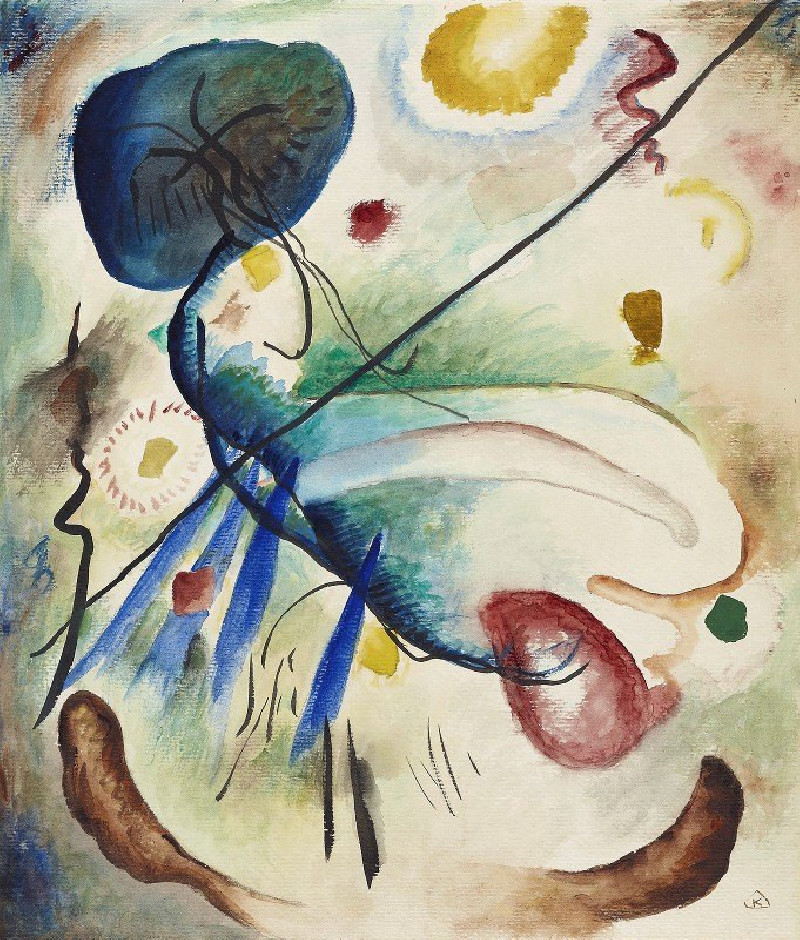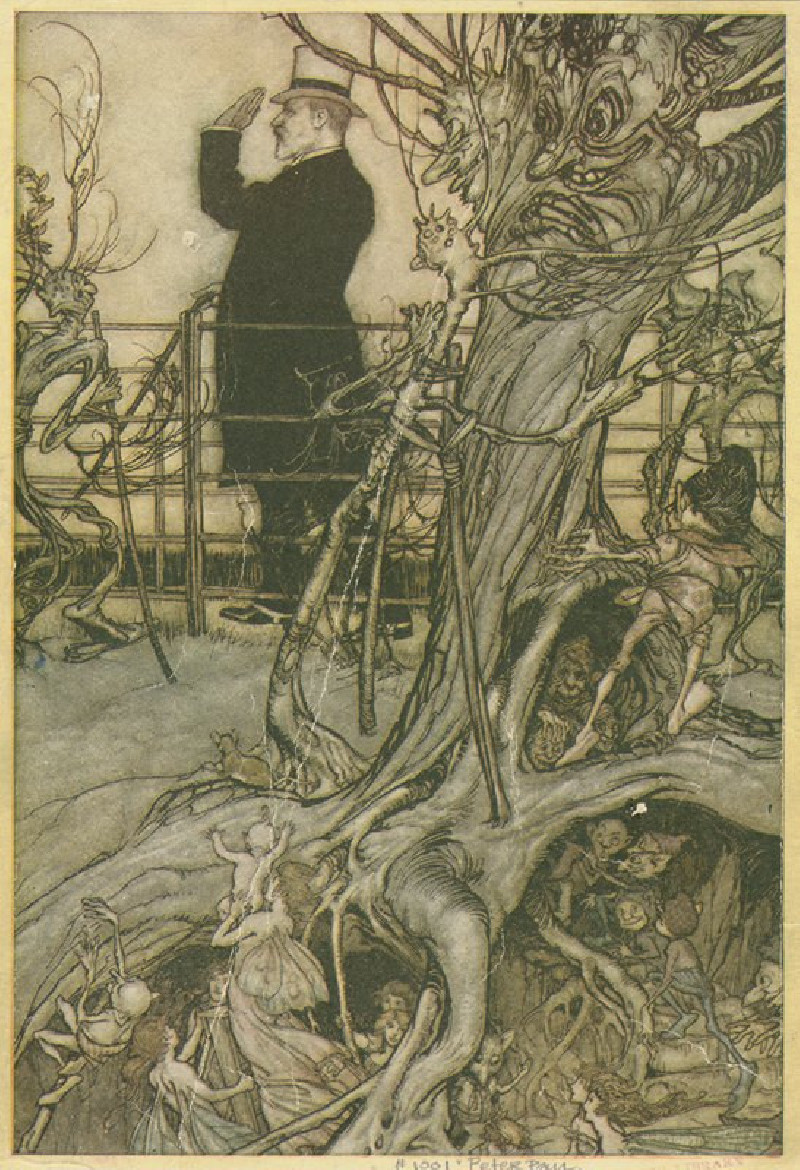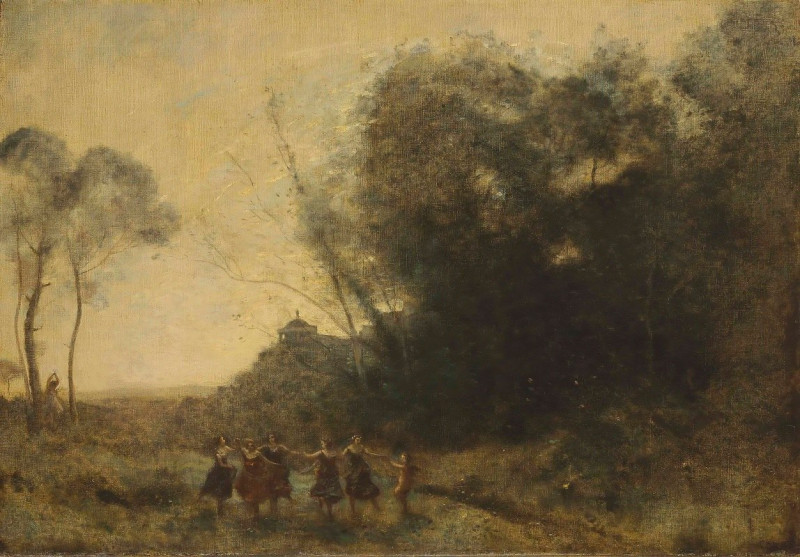Bouquet De Fleurs Dans Un Vase
Technique: Giclée quality print
Recommended by our customers
More about this artwork
"Bouquet De Fleurs Dans Un Vase" by Maximilien Luce captures the simple yet profound beauty of a flower arrangement within an intimate setting. The painting features an array of bold, red blooms, possibly poppies, paired with splashes of yellow and hints of greenery, all nestled within a deep blue vase. Luce's use of vibrant colors and loose brushstrokes evokes a sense of freshness and spontaneity, which brings the floral scene to life.The background, a subtly rendered mix of creamy whites and gentle grays, complements the vivid colors of the flowers, allowing them to stand out as the focal point of the composition. This contrast not only heightens the visual impact of the bouquet but also adds depth, suggesting a harmonious interaction between the natural beauty of the flowers and their domestic surroundings.Maximilien Luce, known for his Neo-Impressionist approach, employs color and texture to convey emotion and atmosphere, making "Bouquet De Fleurs Dans Un Vase" a delightful exploration of nature’s palette and its ability to enhance everyday life.
Delivery
Returns
Maximilien Luce was a prolific French Neo-impressionist artist, known for his paintings, illustrations, engravings, and graphic art, and also for his anarchist activism. Starting as an engraver, he then concentrated on painting, first as an Impressionist, then as a Pointillist, and finally returning to Impressionism.

